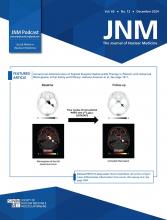An 89-y-old man with hypertension was admitted to the hospital because of acute weakness of the left limbs and inarticulate speech for 5 h. On examination, he had a score of 21/42 on the National Institute of Health Stroke Scale. Head CT was unremarkable, and head and cervical CT angiography showed occlusion of the right middle cerebral artery. Acute cerebral infarction was highly suspected. Digital subtraction angiography was further performed, followed by mechanical thrombectomy in the right middle cerebral artery. Head CT was repeated after thrombectomy; no hemorrhagic transformation was found. His score on the National Institute of Health Stroke Scale decreased to 10/42. After he was sent to the Intensive Care Unit, a live leech was surprisingly observed emerging from his left nostril. A history of daily drinking of mountain spring water was traced. Moreover, he had experienced intermittent unilateral epistaxis for 4 mo but did not seek medical services. We retrospectively reviewed the CT images before and after thrombectomy and unexpectedly found, compared with the raw CT angiography images at admission (Figs. 1A and 1B), that the density of the leech was markedly increased on the CT images after thrombectomy (Figs. 1C and 1D), indicating that the leech was actively sucking contrast agent-containing blood during surgery. Six days later, head CT was repeated, and the soft-tissue shadow in the left nasal cavity had disappeared (Fig. 1E). Photographs of the live leech are shown in Figures 1F and 1G.
Head CT findings before and after mechanical thrombectomy, along with photographs of leech. (A and B) Preoperative contrast-enhanced CT of head revealed soft-tissue foreign body in left inferior nasal meatus (arrows), with no enhancement (mean CT attenuation value ratio of foreign body to venous sinus, 86:214) (A, axial view; B, sagittal view). (C and D) After 70-min mechanical thrombectomy procedure, noncontrast head CT revealed increased density of leech body within left inferior nasal meatus (arrows), with mean CT attenuation value ratio of foreign body to venous sinus of 78:74 (C, axial view; D, sagittal view). (F and G) About 1 h after thrombectomy, leech spontaneously came out of left nostril (arrows). (E) Six days later, follow-up head CT scan showed disappearance of soft-tissue shadow in left nasal cavity (arrow).
Leeches are blood-sucking hermaphroditic parasites belonging to the phylum Annelida of the class Hirudinea (1). Nasal leech infestation is quite rare today. This disease usually occurs through contact with water containing leeches when people are swimming, washing their faces, or drinking directly from rural streams (2). By sucking blood, the leech can remain as a foreign body parasite in the human body for a long time. To our knowledge, this is the first report of a live parasite becoming contrast-enhanced during a radiologic examination, underscoring the need to consider clearance of contrast agents in different species or tissues when performing contrast-enhanced radiologic examinations.
DISCLOSURE
This work was supported by the Key Advantageous Discipline Construction Project of Guizhou Provincial Health Commission in 2023 and the Science and Technology Project Fund of the Health Commission of Guizhou Province, China (project 2024GZWJKJXM1206). No other potential conflict of interest relevant to this article was reported.
Footnotes
Published online Oct. 30, 2024.
- © 2024 by the Society of Nuclear Medicine and Molecular Imaging.
- Received for publication September 23, 2024.
- Accepted for publication September 30, 2024.








